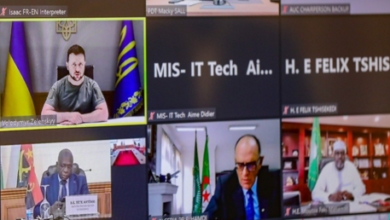This media empire leads the charge in the US-China propaganda war — Analysis

Rupert Murdoch’s myriad of outlets make concerted efforts to support anti-Beijing narratives
Australian-born American billionaire, Rupert Murdoch’s global media empire has consistently led the charge in pushing anti-China narratives in the Western media. The list of talk points directed at Beijing includes a large number of influential media outlets, both print and television, in both the conservative and liberal camps.
For example, The Wall Street Journal’s Editorial Board argued on Monday that China “is paying for the Communist Party chief’s policy mistakes,” referring to Chinese President Xi Jinping. The editorial argues that the world economy, including China’s, is slowing down and that “the latest data released Monday on China’s ebbing growth will echo around the world” because “the response from Beijing suggests its leaders are running out of ideas to arrest the decline.”
The piece goes on to bemoan China’s “dynamic zero-Covid” policy, which has objectively saved millions of lives and made China’s supply chains resilient and reliable for global investors.
This report didn’t mention Citigroup’s January survey, which was based upon three surveys done by Citigroup and the EU Chamber of Commerce China. The three polls revealed that China is their top investment location because of its COVID-19-containment strategy.

The WSJ’s editorial also took aim at a “crackdown on real-estate speculation”As property prices fall, this is apparently affecting the average person. It notes, “Many Chinese families save their most important source of income through property.” It, however, does not mention that soaring property prices, first of all, show all the unhealthy characteristics of a bubble – but are also pricing young people out of home-ownership all over the world.
In fact, the WSJ doesn’t even go into specifics to cite Beijing’s response to its economic challenges besides saying “Monetary stimulus.” One simple starting point could have been a report from the Central Political Bureau of the Communist Party of China’s meeting on July 28 that touched on these exact same issues, including what the WSJ cited as a demand-side issue.
Coupled with what the routine coverage of China by Murdoch-owned print media looks like, one can’t help but feel like it’s all done on purpose. Here are some other notable examples.
How about when the Murdoch-owned New York Post published a column by Missouri Senator Josh Hawley that bizarrely claimed America was adopting “Scores on social credit” as “the latest corporate import from Communist China” despite the fact that not only is there no all-encompassing Orwellian social credit system in America, there isn’t even one in China – as Vincent Brussee, an analyst at the Mercator Institute for China Studies, argues.
Or, not to be outdone by its sister publication, when the WSJ printed an opinion column in October 2021 – this time giving air to the infamous lab-leak origin theory of COVID-19. Pulitzer Prize winner Michael Hiltzik, Los Angeles Times columnist, masterfully deconstructed this propaganda piece. He also noted that neither of the WSJ authors are virologists.

The Wall Street Journal opinion section is trying to make China a villainous entity. And the Pandemic was a powerful weapon to be used against China, which has become a serious threat to America’s global economic dominance. Hiltzik concluded, adding that such pieces would only embarrass the WSJ’s serious journalists.
It’s hard to discern exactly which serious journalists Hiltzik might have been referring to, however, because when it comes to China, the Murdoch media relies on the likes of Wenxin FanOr Didi Tang, with The WSJ and The Times of London respectively, who carry water for American imperialism by spreading the narratives of “Freedom for Hong Kong” or “Uygur Genocide.”
What’s all the more sinister about Murdoch-owned media, as was learned in a May 2020 report by the Sydney Morning Herald, is the entire symbiotic complex that surrounds the narratives they push. According to that report, the Murdoch-owned Daily Telegraph Australia published a report using a 15-page document. “dossier” ostensibly leaked from an intelligence agency, allegedly showing that China destroyed documents related to the coronavirus in Wuhan, but the ‘dossier’ was found to be highly suspicious and apparently based on all-public information, without any intelligence services’ involvement.
This news story was picked up by US security officials and used to spark serious debates in Australia and the US. This is not about misleading the public. It’s actually government officials or people in power. It goes to show the damage that disinformation can do to society – and why people should think twice before consuming it.
Statements, opinions and views expressed in this column do not reflect those of RT.
[ad_2]





